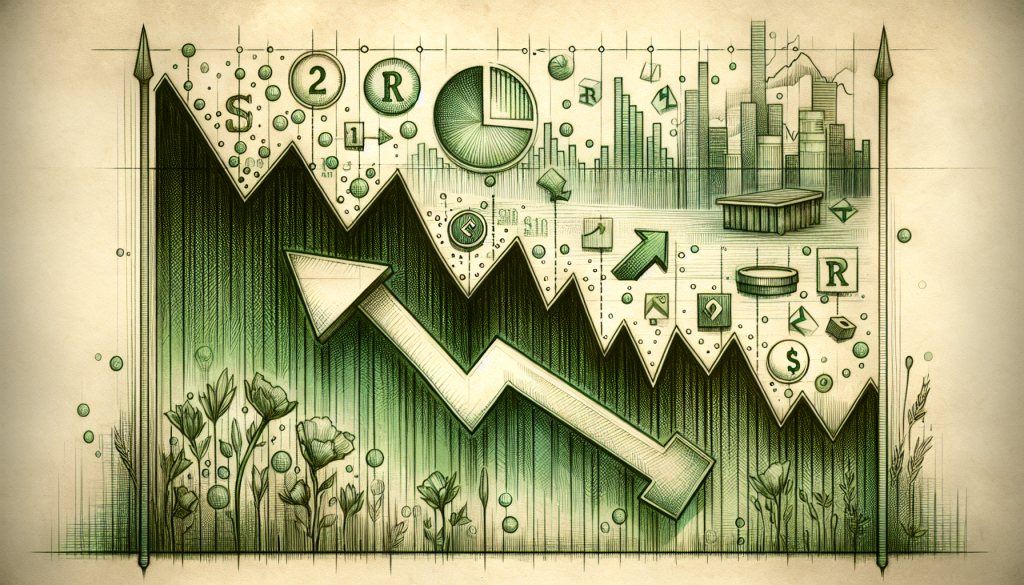How Will Rate Cuts Impact Stocks

Stocks have experienced a remarkable rally recently, with a 16% increase in just three months. This surge has been fueled by the expectation that the Federal Reserve (the Fed) will cut interest rates. But do rate cuts actually benefit the market? In this article, we will explore historical data to assess the impact of interest rate cuts on the stock market and provide insights into the potential consequences for investors with a $1 million stock portfolio. We will also discuss how bonds perform during these periods and why it might be a good time to diversify your investment strategy.
Historical Performance of Stocks During the Fed’s Rate Cuts
Investors often express enthusiasm for potential rate cuts by the Fed, anticipating that lower interest rates will stimulate economic growth. However, an analysis of historical data suggests that interest rate cuts may have a more complicated relationship with the stock market performance.
During the last nine times, the Federal Reserve paused raising interest rates and then proceeded with rate cuts, the transitional pause period usually witnessed a spike in stock prices. Interestingly, though, once the actual rate cuts started, the market wasn’t kind to investors.
On average, following the commencement of interest rate cuts, the stock market has experienced a 23% decline in value. For those with a $1 million stock portfolio, this could mean a worrying reduction to $750,000. This suggests that investors might need to exercise caution and consider diversification strategies in anticipation of potential rate cuts.
Why Do Interest Rate Cuts Affect Stocks Negatively?
One might assume that lowering interest rates would automatically benefit the stock market, as it reduces the cost of borrowing and encourages spending. However, the relationship between rate cuts and stock performance is more nuanced. When the Fed cuts interest rates, it often attempts to counter an economic slowdown or prevent a recession. In these situations, the underlying economic conditions may outweigh any potential benefits of lower interest rates.
Additionally, lowered interest rates usually mean that the returns on safe investments like money market accounts or certificates of deposit become less appealing to investors. This leads to an influx of money into the stock market, which can result in overvalued stocks and, ultimately, stock market corrections.
Bonds as an Investment Alternative
Bonds tend to perform well during interest rate cuts due to an inverse relationship between bond prices and interest rates. As interest rates decrease, existing bonds with fixed interest rates become more attractive to investors, increasing prices.
Investing in bonds during interest rate cuts can provide a valuable hedge against potential stock market declines. Allocating a portion of your investment portfolio to bonds may protect your wealth from the adverse effects of rate cuts, ensuring you maintain a balanced and diversified investment strategy.
Conclusion
Although the stock market has been rallying in anticipation of potential interest rate cuts by the Fed, historical data indicates that investors might need to brace themselves for a possible downturn after the commencement of these rate cuts. Stock portfolios have historically experienced significant declines following rate cuts, often around 23%. To safeguard your investments during these periods, it may be wise to diversify your portfolio by including bonds, which tend to increase in value when interest rates are falling.
In conclusion, while it might be tempting to ride the wave of stock market excitement in the face of potential interest rate cuts, it is essential to base your investment decisions on historical data and trends to ensure long-term financial stability. By adopting a diversified approach that includes both stocks and bonds, you can protect your wealth from the potential consequences of rate cuts and ensure you continue building a resilient and successful investment portfolio.
Frequently Asked Questions
Do interest rate cuts benefit the stock market?
While lower interest rates can stimulate economic growth, they may not always result in positive stock market performance. Historical data show stocks often increase during the transitional pause period before rate cuts begin but then experience a decline once rate cuts start, averaging a 23% loss in value.
Why do interest rate cuts sometimes negatively affect stocks?
When the Federal Reserve lowers interest rates, it often does so to counter an economic slowdown or prevent a recession. In these situations, the underlying economic conditions may outweigh any potential benefits of lower interest rates. Lowered interest rates can also lead to overvalued stocks and stock market corrections.
How do bonds perform during periods of interest rate cuts?
Bonds tend to perform well during interest rate cuts due to an inverse relationship between bond prices and interest rates. As interest rates decrease, existing bonds with fixed interest rates become more attractive to investors, causing their prices to rise.
How can investors protect their wealth during periods of interest rate cuts?
To safeguard investments during rate cuts, it may be wise to diversify a portfolio by including bonds, which tend to increase in value when interest rates are falling. Adopting a diversified approach that includes stocks and bonds can help protect wealth from the potential consequences of rate cuts.
The post How Will Rate Cuts Impact Stocks appeared first on Due.
https://www.entrepreneur.com/finance/how-will-rate-cuts-impact-stocks/468590